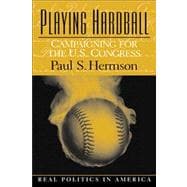
PAUL S. HERRNSON is director of the Center for American Politics and Citizenship and professor of government and politics at the University of Maryland. He is the author of Congressional Elections: Campaigning at Home and in Washington and Party Campaigning in the 1980s. He has published numerous articles and book chapters on political parties, interest groups, Congress, and elections. Professor Herrnson is a former American Political Science Association Congressional Fellow and is the recipient of several teaching awards. He received his B.A. from the State University of New York at Binghamton and his Ph.D. from the University of Wisconsin-Madison.
| Preface | vii | ||||
| About the Contributors | ix | ||||
|
1 | (11) | |||
|
|||||
|
12 | (29) | |||
|
|||||
|
|||||
|
|||||
|
41 | (29) | |||
|
|||||
|
|||||
|
|||||
|
|||||
|
|||||
|
|||||
|
70 | (22) | |||
|
|||||
|
|||||
|
|||||
|
|||||
|
92 | (16) | |||
|
|||||
|
|||||
|
|||||
|
|||||
|
108 | (19) | |||
|
|||||
|
127 | (11) | |||
|
|||||
| Index | 138 |
The New copy of this book will include any supplemental materials advertised. Please check the title of the book to determine if it should include any access cards, study guides, lab manuals, CDs, etc.
The Used, Rental and eBook copies of this book are not guaranteed to include any supplemental materials. Typically, only the book itself is included. This is true even if the title states it includes any access cards, study guides, lab manuals, CDs, etc.